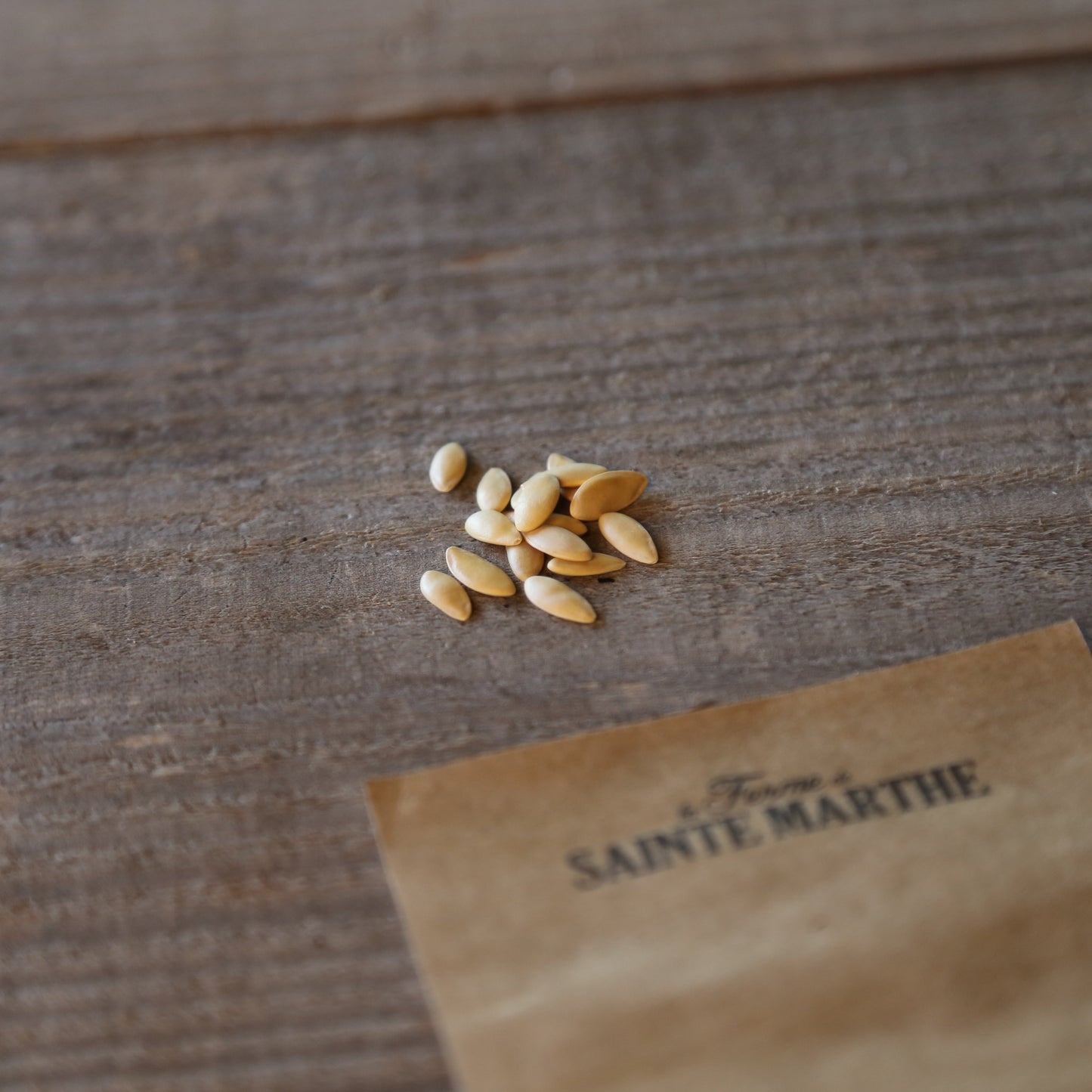SUCRIN MELON FROM TOURS AB
Cucumis melo
The Sucrin de Tours melon is an old variety of the embroidered melon type, easy to grow, semi-early and with abundant production. The flesh of the Sucrin de Tours melon is orange-red , thick, firm, sweet and of excellent quality.
Sowing melons in pots
Melons need a lot of heat (between 24 and 35°C) and light to germinate. The temperature during the day should therefore be within this range and not drop below 15°C at night. Ideally, you should sow your melon seeds in a warm frame or heated greenhouse in March/April and replant them in the garden after the risk of frost has passed, i.e., in mid-May.
Sow 2 or 3 seeds (point down) per pot filled with fine seed compost at a depth of 1 cm. Water regularly to keep the compost moist (but not soggy) with a sprayer. Place next to a window or in full light. As soon as the seedlings have emerged, the need for light is even greater, so make sure to place them in a very sunny spot. Remove the weakest plants to keep only the most vigorous ones.
Melon sowing in place
Another solution, more reserved for residents of the South of France or those in a Mediterranean climate, is to sow directly into the ground. Space each future melon plant 80 cm to 1 m apart, place 2 to 3 seeds per hole (1.5 cm deep) and cover with a mixture of sifted garden soil and mature compost. Protect the seedlings with a cloche or a frame at the beginning of the growing season. Keep only the best-looking plant.
Melon planting
Depending on the region, you can plant young melon plants in the garden between April and mid-June. We recommend keeping a plastic tunnel at the beginning of cultivation to provide more heat. If you do not live in the south, we strongly recommend using a heated greenhouse for growing melons and watermelons. Make sure to keep a spacing of 80 cm to 1 m between each plant. The melon will appreciate a warm place, a sunny exposure, a rich and deep soil rich in potash . Do not hesitate to loosen the soil a little before planting and add a little compost.
Association with the vegetable garden
In the vegetable garden , melon will get along well with most vegetables, except cucumber and squash.
Melon cultivation
It should be noted that the new varieties do not require pruning, except for topping (cutting the head). As soon as the plant has formed 4 or 6 leaves, the main stem is pruned: this allows for rapid good branching and greater fruiting. Watering must be regular but limited; flooding your crops would reduce their taste. Do not wet the foliage when watering, otherwise powdery mildew may develop. Weed in the weeks following planting to avoid competition, then mulch when the soil is warm, at the end of June or beginning of July. Remove any leaves that hide the fruit; the fruit must receive maximum sunlight. Place wooden planks or tiles under the fruit to protect it from soil moisture and to provide extra heat.
Melon harvest
Harvest the fruit about 2-3 months after transplanting it to the garden. Note its color, which generally fades, and its stalk, which should appear to begin to peel off effortlessly. You will also notice its more pronounced aroma. Do not store it in the refrigerator, which would destroy its delicious aroma. Fully ripe fruit can be recognized by the small crevice around the stem, a sign that the melon will soon detach.
Melon diseases
Melons are very susceptible to cucurbit mildew , leaf spot, and powdery mildew. It is imperative to avoid watering the foliage at the end of the day, especially during hot, humid weather (during summer storms), as mildew contamination occurs on wet foliage. At the end of the season, you can install a tile or board under each melon to protect it from moisture. The main pests are aphids and seed flies. To avoid fly infestation, plant when temperatures are high enough to allow rapid plant growth.









